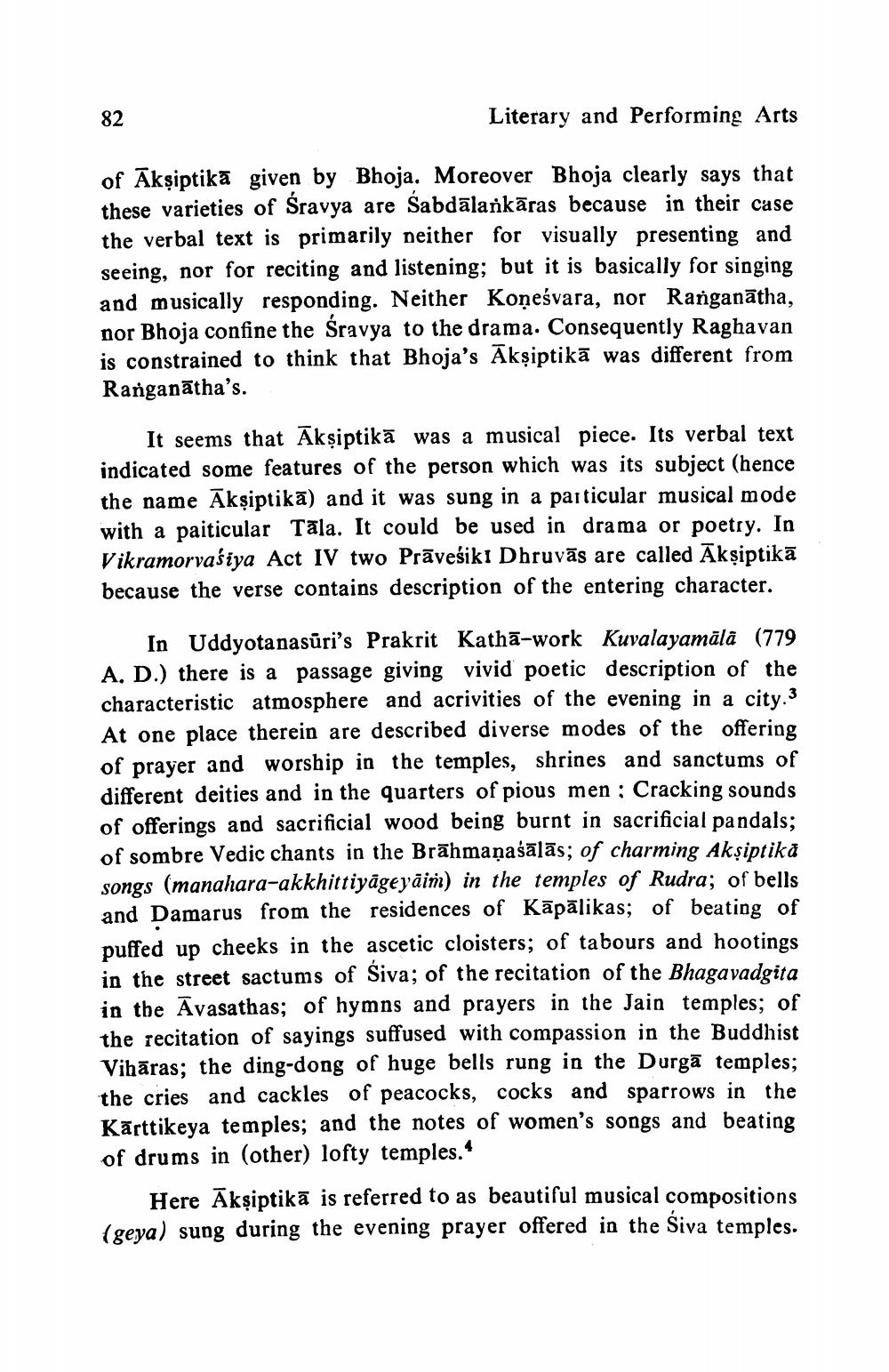________________
Literary and Performing Arts
of Akşiptikā given by Bhoja. Moreover Bhoja clearly says that these varieties of Sravya are Sabdālaňkāras because in their case the verbal text is primarily neither for visually presenting and seeing, nor for reciting and listening; but it is basically for singing and musically responding. Neither Koṇeśvara, nor Ranganātha, nor Bhoja confine the Śravya to the drama. Consequently Raghavan is constrained to think that Bhoja's Ākşiptikā was different from Ranganātha's.
It seems that Akşiptikā was a musical piece. Its verbal text indicated some features of the person which was its subject (hence the name Ākşiptikā) and it was sung in a particular musical mode with a paiticular Tāla. It could be used in drama or poetry. In Vikramorvasiya Act IV two Prāvesiki Dhruvās are called Akşiptikā because the verse contains description of the entering character.
In Uddyotanasūri's Prakrit Kathā-work Kuvalayamālā (779 A. D.) there is a passage giving vivid poetic description of the characteristic atmosphere and acrivities of the evening in a city:3 At one place therein are described diverse modes of the offering of prayer and worship in the temples, shrines and sanctums of different deities and in the quarters of pious men : Cracking sounds of offerings and sacrificial wood being burnt in sacrificial pandals; of sombre Vedic chants in the Brāhmaṇaśālās; of charming Aksiptika
manahara-akkhittiyāgeyāim) in the temples of Rudra; of bells and Damarus from the residences of Kāpālikas; of beating of puffed up cheeks in the ascetic cloisters; of tabours and hootings in the street sactums of Siva; of the recitation of the Bhagavadgita in the Avasathas; of hymns and prayers in the Jain temples; of the recitation of sayings suffused with compassion in the Buddhist Vihāras; the ding-dong of huge bells rung in the Durgā temples; the cries and cackles of peacocks, cocks and sparrows in the Kārttikeya temples; and the notes of women's songs and beating of drums in (other) lofty temples."
Here Ākşiptikā is referred to as beautiful musical compositions (geya) sung during the evening prayer offered in the Siva temples.




